Member Login
E-mail: ISTM@ISTM.org
Office hours: Monday - Friday, 9.00 - 17.00 EDT (UTC-04)
November 2011

President's Message
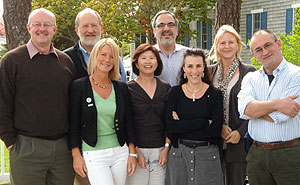
ISTM Executive Board from left to right: back row, Alan Magill, David Shlim, David Freedman, Annelies Wilder-Smith, Francesco Castelli and front row Fiona Genasi, Lin Chen, Karin Leder
ISTM members are perhaps not fully aware of how the society operates and what the leaders actually do. Therefore I felt it might be helpful to give a broad overview of the work of the Executive Board (EB) and Leadership Council (LC).
The EB of the ISTM annually meet in person in conjunction with the CISTM or RCISTM. The EB is made up of the four elected Counsellors, the President Elect, President and Past President. The Secretary-Treasurer, an appointed position, also sits on the EB as a non-voting member. The LC of the ISTM consists of each Chair of every ISTM Standing Committee, Professional and Interest Group and Task Force. The LC meets face-to-face with the EB at least every other year, to coincide with the CISTM, but members are also invited to participate in the EB teleconferences which are conducted three to four times throughout the year.
This regular communication provides us with the opportunity to have strategic discussions regarding the overall direction, programmes and activities of the society, receive reports from all of the working groups of the ISTM, as well as conduct ISTM business. The participation of the full LC in these discussions helps to ensure that the perspective of the wider membership is considered when decisions are made and society objectives are identified.
Highlights of recent discussions include:
CISTM12 Review
After the CISTM12 in May, we reviewed the scientific programming, functions, and processes as well as the feedback received from delegates. The diversity and high scientific content of the programme was applauded and conference organization was generally considered to have gone smoothly. However one concern raised by a number of the delegates was that they wished to receive copies of the power point presentations of the scientific sessions. This is something we have not done in the past. After some discussion, the decision was made to make those presentations for which we had speaker permission available for download from the website at no charge to the delegates.
Committee Leadership Positions
The bulk of the day-to-day ISTM work is done by its Committees. As we continue to look at the diversification of the society leadership, and in order to begin succession planning the EB has been working with the committee chairs to appoint co-chairs from a different continent and review committee membership. If you are interested in serving on an ISTM Committee, you may complete the Call for Contributors Form found in your annual membership packs that have just been sent out, or contact the ISTM Secretariat.
Professional and Interest Group Leadership Elections
The Professional and Interest Groups are relatively new to the ISTM, and it has been wonderful to see how they have progressed. As we enter our second and third year anniversaries for the groups, we are happy to see they are conducting elections to ensure their leadership is voted by their constituencies, rather than appointed by the EB. The election processes that have been put in place were designed by the groups themselves though require approval from the EB.
Upcoming Conferences
Once a conference venue has been set, we receive regular updates to ensure the planning is proceeding as required for both the conferences and regional meetings. There is a Conference Oversight Committee that manages every aspect of our CISTMs. The CISTM14 venue (2015) is currently being identified and is expected to be finalized within the next six months. It will likely be held in Canada.
Improving International Outreach of the ISTM
Based on a strategic planning discussion held during the May 2011 meeting, we established a task force to tackle this key issue, which will include consideration of ISTM operations, membership, partnerships, and meetings. The Task Force is in the process of working through its recommendations, and we look forward to receiving these in March of 2012. If you would like more information about the Task Force, you can find it in the September 2011 NewsShare.
Continuing Professional Development Programme
In May of 2010, the EB established a Task Force to consider the possibility of establishing a continuing professional development programme for the ISTM, enhancing the current Certificate of Travel Health process. After receiving its recommendation this year, the EB agreed it is time to continue to help elevate the practice of travel medicine, and establish such a programme. The Continuing Professional Development Committee was established and has been working on the elements and implementation of this. The expectation is that the CPD Committee will be in a position to report back to the EB on the details of the programme during the RCISTM5 in Singapore
Distance Learning Education
This year we released a new distance education portal that was created by capturing sessions during the 2011 Travel Medicine Review Course and CISTM12. The programme was developed so those who are unable to attend these events in person will have the opportunity to receive the information over the internet easily and efficiently. The next step of the distance learning programme is to begin to produce stand-alone Webinars that will be transmitted over the internet in real-time. These webinars will be short in duration (60 minutes), and will encompass current and focused topics of interest to travel medicine practitioners. We plan to release the first Webinar during the second quarter of 2012.
Publishing
The Publications Committee has been very busy this year, looking at a number of publishing practices and policies regarding ISTM materials. The EB has received the recommendations and is moving forward with ensuring that translations of documents are managed appropriately, disclaimers are accurate, and materials are distributed via the optimum channels.
Research Awards
In May, the Research and Awards Committee requested an increase in the monies available for the Research Award Grants. The EB approved this increase, indeed doubling the amount available in recognition of the need to support travel medicine related research. The 2011-2012 Research Award Applications are now available on the ISTM website. More information can be found later in this issue of NewsShare.
Reviewing Financial Status Reports and Approving the Budget
While the Secretary-Treasurer receives monthly updates regarding the financial status of the society, the EB also received quarterly updates from the Secretariat comparing current and projected expenses to the approved budget and providing status updates on the investments. Each year the EB approves the annual operating budget prepared by the Secretariat, with input from each member of the LC and endorsed by the Finance Committee. The 2011-2012 operating budget was approved at basically a break-even year and we are currently on track. More information about the society finances can be found in the Secretary-Treasurer report in this issue of NewsShare.
Membership Reports
The Secretariat provides us with periodic membership reports, including data regarding membership recruitment, retention, demographics and geography. I am pleased to say the ISTM membership is increasing despite these turbulent economic times. I hope you, as a valued ISTM member, are experiencing increased communication, inclusion and participation in the society and its activities.
If any member has an item they would like to have considered by the ISTM Executive Board, we would like to hear from you. Please email the ISTM Secretariat at ISTM@ISTM.org with the subject line reading: EB Discussion.
Cheers,
Fiona
From the Editor
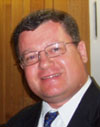
Peter Leggat
The 20th Anniversary Year of the ISTM has been passing by very quickly and already this is my fourth issue of ISTM NewsShare as the new Editor. There is a lot happening in the ISTM and, being part of the Leadership Council and the publications team, the NewsShare Editor can gain a unique insight into the Society and its activities. Four issues latter, I am still of the belief that this is one of the best jobs in the ISTM!
In this issue of ISTM NewsShare, Members will read about the extraordinary amount of work being undertaken by the Executive Board, Committees and Groups ably supported by the tremendous enthusiasm of Diane Nickolson, the Executive Director, and the Secretariat. In her President's Message, Fiona Genasi has summarized some of the work of the Executive Board and the Leadership Council. Fiona's call for members to consider serving on an ISTM Committee or other group is a reflection of the push towards inclusiveness within the Society as well as diversification of the society leadership. To facilitate this, there is a Call for Contributors Form will be available in the annual membership packs being sent out to members. It is certainly important for Members to become involved as much as possible in their Society; a Society that is traveling well financially in difficult times under the excellent stewardship of Secretary Treasurer, David Freedman.
Don't miss the opportunity to apply for an ISTM Research Award. Grants range from USD 5,000-10,000 and a link to the Application Form is available under Research & Awards in this issue of NewsShare.
The 5th Regional Conference of the ISTM (RCISTM5) in Singapore is also rapidly approaching and the key dates are worth keeping in your diary, not least of which are the 2-5 May 2012, the dates of the Conference. The good news for those who missed the original deadline to submit abstract for RCISTM5 is that the deadline has been extended to the 2 December 2011. For those preparing the CTH® examination in Singapore, there is a useful ISTM 2012 Travel Medicine and Review Course being held in San Francisco on 25-26 February 2012. We should also remember that CISTM13 is also not far away and will be held in Maastricht, The Netherlands, from 19-23 May 2013. These conferences represent wonderful opportunities for learning, debate and professional networking, as well as for meeting old friends and perhaps making some new ones!
Also in this issue, our past NewsShare Editor, Karl Newmann, has contributed a light-hearted piece with a serious message on surviving bathrooms during travel. I think most readers can identify with the issues he raises! Finally, for those looking for an even greater challenge in travel medicine, Diane has put together a wonderful Crossword Puzzle to test your ISTM knowledge. We hope to make this a regular feature in ISTM NewsShare. Enjoy this issue of the ISTM NewsShare. As always, we welcome contributions and suggestions from our Members.
- - Late Breaking News - -
We have just learned The National Travel Health Network and Centre in England (NaTHNaC) announced the departure of Professor David R. Hill. After directing NaTHNaC since its establishment, Professor Hill will be leaving at the end of December 2011 for a new position in the United States. He is stepping down as Director to lead the Global Public Health programme at the newly established Frank H. Netter School of Medicine at Quinnipiac University in Connecticut, USA.
Peter Leggat
Editor, NewsShare
Secretary-Treasurer's Report

David Freedman
I am pleased to report on our current financial status. An audited financial report for the 2011 fiscal year, 1 July 2010-30 June 2011, prepared by our independent auditing firm, Fulton Kozak, Inc. of Atlanta, Georgia, USA was mailed to all members recently with the annual renewal materials.
Our financial position continues to remain very solid. In 2011, we conservatively budgeted for essentially a break-even year, and ended up with an operating surplus. While we are invested cautiously, fluctuations are inevitable and a $100,000 gain early in the 2010/11 fiscal year has now receded again.
Our Balance Sheet at the end of our fiscal year on 30 June 2011 showed net Assets of roughly USD 2.25 million. In reviewing assets, several considerations are important. This prior year we changed how we recognize membership dues revenue based on recommendations from our independent auditing company, bookkeeper and Executive Director. Beginning this past year we now recognize the membership dues as they are received, resulting in more than USD 50,000 of unanticipated revenue that in prior years would have been carried over into subsequent years. Additionally:
- the bulk of our membership revenue comes in from November through March;
- US Federal and European CDC grant dollars which support the ISTM GeoSentinel® project are managed on a pass-through basis and so ISTM can be holding up to USD 180,000 of those totally restricted funds for disbursement to the project;
- during any fiscal year we have up to USD 200,000 “loaned” as the start-up costs to future CISTM, RCISTM as well as courses and other meetings; this money is accommodated for in our financial reports and belongs to us, but is not available for operating expenses.
Challenges for the coming years include continued delays in recovery from the current recession, which could impact membership as well as meetings. All medical societies continue to suffer from dramatic decreases in sponsorships, and we will continue to focus considerable energies in diversifying our revenue streams, offering new projects and programs during the next year. We also understand the increasing difficulties members have in the current financial times in attending meetings and courses and thank you sincerely for your dedication to ISTM and for your continued strong support of all our activities.
News from the Secretariat

Diane Nickolson
The 2012 membership renewal packets have been sent - watch your mail for the large white envelope labeled “Membership Materials Enclosed”. In the packet you will find a wealth of information about the current programs and projects of the ISTM, as well as the renewal form. The easiest way to renew is through the ISTM website at www.ISTM.org, but you may also complete the form and send it to us with your payment.
In the packet you will find information about the ISTM Professional and Interest Groups - please take a moment to review the information and consider joining one or more of these groups as you renew for no additional cost.
We have had some changes in the Secretariat Office recently and I wanted to give you an update on our staffing. We were thrilled to have brought in Daveen Capers, our new Member Services and Project Assistant, on a full time basis. Daveen has been with us off and on for a year, helping with projects as needed. She brings years of experience with customer relations, database management, and coordination of projects and reports. Daveen’s responsibilities are to ensure timely and accurate responses to member and customer communications, and to support many of our programs and projects. Her contributions are critical for keeping the office functioning smoothly and activities on track. Many of you have been in contact with Daveen sometime over the past year as she helped to staff the ISTM@ISTM.org email box. Daveen has brought a steady, calm and competent demeanor and has shown great initiative in jumping in to get things accomplished and to take on new responsibilities.
We also have a new Project Coordinator, Kathy Smith. Kathy recently joined the Secretariat team and has brought with her a rich background from a variety of roles and experiences. Kathy has her bachelor’s degree in behavioral science, and early in her career Kathy worked at a University Hospital in the office of the Dean of the Pathology Department providing her with a familiarity with medical terminology, budgets, and project coordination. Kathy recently spent ten years in Macedonia, working as a coordinator for an outreach ministry, where she managed development proposals and outreach, the operating budget, international travel arrangements, and research proposals and reports. While in Macedonia Kathy also found the time to establish and administer a free kindergarten for underprivileged children living in the inner city areas of Skopje, including its design, oversight, teacher training, logistical support, fundraising, and volunteer enlistment. Kathy’s role at the ISTM is to support ISTM Committees, Groups, GeoSentinel® logistics, and ISTM projects, as well as taking on administrative and bookkeeping responsibilities. Kathy has been able to immediately begin contributing to the ISTM Secretariat, and brings with her a quick wit (keeping all of us smiling), as well as a bright, “can do” and upbeat approach to everything.
I would be remiss if I didn’t mention our GeoSentinel® Project Database Manager, Elena Axelrod. Elena has been with the ISTM working solely on the GeoSentinel® Project for 9 years. While we have a number of consultants contributing to the GeoSentinel® project, Elena is the only ISTM employee dedicated full time to the project and is housed at the Centers for Disease Control and Prevention (CDC). Elena’s background in database programming and management, coupled with her exceptional communication skills has made her the perfect liaison and trainer for the GeoSentinel® sites as they submit patient data into the database. Her eagle eye and attention to details helps to keep the database integrity high. While Elena isn’t at the office often, her visits are always welcomed, as she helps to provide a good historical perspective to the GeoSentinel® project, a flagship project of the ISTM, not to mention her warm and engaging personality.
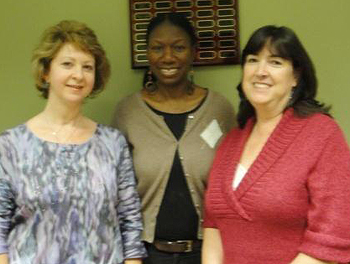
Listed from left to right: Elena Axelrod, Daveen Capers, Kathy Smith
As for me, I’m just completing my second full year as the ISTM Executive Director and look forward to many more years of working with the society. Over the past couple of years I have had the pleasure of working with many exceptional, passionate people, and appreciate the contributions so many members generously make of their time and expertise to support the mission, goals and objectives of the ISTM.
Thank you for all that you do to support the ISTM and the practice of Travel Medicine.
CISTM13 Scientific Program Committee Appointed

Preparations are moving forward to gather ideas and produce the scientific program for the 13th Conference of the ISTM to be held 19-23 May 2013 in Maastricht, The Netherlands. The call for proposals has been issued, and we encourage all members of the ISTM to submit their ideas and recommendations to the Scientific Program Committee through the ISTM website. The deadline for submission is 15 February 2012.
On behalf of the CISTM13 Scientific Committee Chairs, I'm delighted to report that the Scientific Program Committee is complete, with an exceptional group of travel medicine professionals willing to contribute their time and expertise to developing a program that will reflect the interests and needs of our membership.
The CISTM13 Scientific Committee:
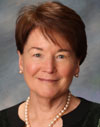
Mary E. Wilson
Mary E. Wilson, Chair, Washington, DC, United States
Leo G. Visser, Co-Chair, Leiden, The Netherlands
Blaise Genton, Associate Chair, Lausanne, Switzerland
Christina Greenaway, Associate Chair, Montreal, Quebec, Canada
Elizabeth Barnett, Boston, MA, United States
Michele Barry, Stanford, CA, United States
John Bosch, Terneuzen, The Netherlands
John Christenson, Indianapolis, IN, United States
Valerie d'Acremont, Basel, Switzerland
Carolyn Driver, Cheshire, England, United Kingdom
Larry Goodyer, Leicester, England, United Kingdom
Martin Grobusch, Amsterdam, The Netherlands
Eyal Leshem, Ramat Gan, Israel
Michael Libman, Montreal, Quebec, Canada
Poh Lian Lim, Singapore
Anne McCarthy, Ottawa, Ontario, Canada
Marc Mendelson, Cape Town, South Africa
Philippe Parola, Marseille, France
Watcharapong Piyaphanee, Bangkok, Thailand
Edward T. Ryan, Boston, MA, United States
Nohoko Sato, Tokyo, Japan
Marc Shaw, Auckland, New Zealand
Heli Siikamaki, Helsinski, Finland
Hilary Simons, Liverpool, England, United Kingdom
William Stauffer, St. Paul, MN, United States
Perry J.J. van Genderen, Rotterdam, The Netherlands
ISTM 2012 Travel Medicine and Review Course
The 2012 ISTM Travel Medicine Review and Update Course will be held on Saturday and Sunday, 25-26 February 2012, at the Marriott Union Square Hotel in San Francisco, California, USA.
The course is tailored to meet the needs of physicians, nurses, pharmacists and other healthcare professionals who provide medical care and advice to travelers, expatriates and migrants. Many attendees come every year to hear the latest information and remain current in their practices.
The course provides a thorough update and review of the Body of Knowledge for the practice of Travel Medicine and assists in preparation for the CTH® exam. Participants have ample opportunities to interact with the faculty through question and answer sessions and informal discussions.
The schedule is in the process of being finalized. The 2012 course will include breakfast workshops to allow us to provide more in depth discussions of some of the topics. The core content will still be contained in the main program, with a number of topics expanded. We are planning for four workshops each morning, some of which will run for both days.
Agenda items include:
The Travel Consultation & Risk Assessment
Prevention of Malaria
Environmental Risks and How to Avoid Them
Global Disease Epidemiology & Safety
Vector-Borne Diseases
Routine Vaccinations
Pregnant, Breast-Feeding and Pediatric Patients
Special Populations: Business, Long-stay, and Visiting Friends or Relatives Travelers
Avoiding and Managing Bites and Envenomations
Evaluation of the Returned Traveler
Principles of Immune Response
Travel Clinic Management and Resources
Principles of Epidemiology and Statistics
Wilderness/Expedition Medicine
Enteric Infection and Travelers' Diarrhea
Vaccination for Travel
Disease Vectors and How to Avoid Them
Challenging Pre- and Post-travel Cases
High Risk and Special Needs Travelers
To register for the 2012 Travel Medicine and Review Course, or for more information go to our website at www.ISTM.org.
Practitioners gather in Singapore for the 9th Asia Pacific Travel Health Conference in May 2012

Abstract submission deadline extended to 2 December 2011!
Singapore, 10 October 2011 - The 9th Asia Pacific Travel Health Conference (APTHC 2012) and 5th Regional Meeting of the International Society of Travel Medicine (RCISTM5) will be held on 2-5 May 2012 here in the lion city of Singapore. Over 600 regional clinicians, physicians, nurses, academics, students, and other healthcare professions in the field of travel medicine are expected to take part in this event.
The conference is organized by the Asia Pacific Travel Health Society and the International Society of Travel Medicine in collaboration with the Singapore Infectious Disease Society, the Faculty of Travel Medicine of The Australasian College of Tropical Medicine, Japanese Society of Travel Medicine, Japanese Society of Travel and Health, Thai Travel Medicine Society and the Maritime Health Association.
Themed "Travel Health and Vaccines: the Asia Pacific Perspective”, the conference will feature internationally renowned speakers and experts from Asia and the rest of the world to speak on the latest developments, management, diagnosis, and controversies in travel health, infectious diseases, vaccines, and related fields.
The impressive list of speakers includes Prof. Nicholas White (Thailand), Prof. Paul Tambyah (Singapore), Prof. Jeremy Farrar (Vietnam), Prof. Robert Steffen (Switzerland), Prof. Balbir Singh (Malaysia), Prof. Allan McGill (USA), and Dr. Mary Wilson (USA), among others.
Plenary topics include Public health meets travel medicine: travelling superbugs, Dengue: the known and the unknown, Vaccines: past, present, future, and Travel Medicine in the Asia Pacific Region. The conference will also cover other important and timely subject matters such as malaria, vaccines for low incidence-high impact diseases, important infections in Asia Pacific, differential diagnosis in returning travelers, special needs, extreme and adventure travelers, sex tourism, medical tourism and eco tourism, travel clinic management, etc.
"The conference promises an excellent scientific program featuring plenary lectures, symposia, interactive workshops, country reports, and lively debates. The Scientific Program Committee headed by Prof. Eli Schwartz (Israel) is making every effort to ensure that participants will have the opportunity to learn, discuss, debate, exchange and share knowledge as well experiences among colleagues for the advancement of travel medicine,” said Prof. Annelies Wilder-Smith, Asia Pacific Travel Health Society President and Organizing Chairman of APTHC 2012.
"We cordially invite our colleagues in the region to take part in this important scientific gathering and submit abstracts of your latest research work for presentation at the 9th APTHC here in Singapore. A commercial exhibition as well as various social events highlighting Singapore’s unique multi-racial cultural heritage, cuisines, history, and hospitality will make your participation at APTHC 2012 a truly unforgettable experience,” Prof. Wilder-Smith added. Abstract submission for this year's program has been extended to 2 December 2011.
Travel medicine practitioners in Asia Pacific will also have the opportunity to take the Certificate in Travel HealthTM examination which is one of the most recognized professional certifications in the field. As part of the ISTM’s Travel Medicine Continuous Professional Development Program, this examination was developed in recognition of the critical need for travel medicine practitioners to maintain and increase their skills and knowledge. The Certificate in Travel Medicine examination will take place on 2 May from 12:00-17:15 hrs. at the Grand Copthorne Waterfront Hotel in Singapore. For more details on how to register, please visit www.istm.org.
For more information about APTHC 2012 in conjunction with RCISTM5, visit www.apthc2012.org or call +65 62924710.
2012 Certificate in Travel HealthTM Examination

Ken Dardick
The 2012 CTH® Examination will be offered on Wednesday, 2 May 2012, immediately preceding the opening ceremonies of the RCISTM5 in Singapore. Detailed information about the CTH® program and the examination are now available on the ISTM website at www.ISTM.org. If you plan to take the examination in 2012, consider participating in the RCISTM5. The scientific program is almost complete and available for viewing at the RCISTM5 website.
The ISTM Certificate in Travel HealthTM, developed by an international panel of travel medicine experts representing a variety of professional disciplines, is granted to candidates who pass the examination and recognizes their individual excellence in knowledge in the field of travel medicine associated with pre-travel care and consultation. The Certificate is the first step in the ISTM Travel Medicine Continuous Professional Development Program. The exam focuses specifically on the level of knowledge that is necessary to practice travel medicine. Understanding of specific tropical diseases and treatments will be limited to that which should be known to advise travelers (for example, in the diagnosis and treatment of traveler's diarrhea or rabies immunoprophylaxis), including post-travel triage of travelers and post-travel screening. Knowledge of tropical medicine is not required.
ISTM members who have been awarded and maintain the Certificate will also be recognized in the ISTM Directory of Travel Medicine Providers and within the Global Travel Clinic Directory on the ISTM website.
4th Northern European Conference on Travel Medicine
The next Northern European Conference on Travel Medicine, which will be held in Dublin, Ireland, on June 6th - 8th, 2012 at the Burlington Hotel Conference Centre. This will be the fourth conference organised by the Northern European Societies and Organisations for Travel Medicine - the first being Edinburgh, the second Helsinki and the third Hamburg. This conference will provide a valuable opportunity to engage with experts as they present the latest information in the field of Travel Medicine. The conference will also meet the needs of the travel media and industry including manufacturers of travel health-related products, drugs and vaccines.
The programme will include all aspects of the rapidly evolving discipline of travel medicine, from the basics such as vaccines, malaria prophylaxis and travellers' diarrhoea to the challenges of migration and occupational medicine in a globalised world. A unique opportunity is also provided to take part in a variety of diverse and interesting OSKE (Objective Structured Knowledge Exchange) sessions.Travel medicine practitioners give pre-travel advice as well as seeing returning travellers with unfamiliar and challenging illness or tropical diseases - prevention, diagnosis and treatment of these travel related topics will be covered in depth. Finally the conference is a forum to establish standards for training and education in travel medicine, present research and meet colleagues.
You can be assured of a "céad mÃle fáilte" (a hundred thousand welcomes) when you come to Ireland. Dublin has many landmarks and places of interest. The oldest being Dublin Castle comissioned in 1204 and completed in 1230. The newest is the Spire of Dublin, it is 121.2 m (398ft) tall, its official title "Monument of light" the base is lit and the top is illuminated to provide a becon in the night sky. Dublin also has many parks around the city, the largest is the Phoenix Park which is 1,750 acres one of the largest walled parks in Europe and is home to a herd of wild Fallow deer. The park is also home to Dublin Zoo. Ãras an Uachtaráin the residence of The President of Ireland, and the residence of USA Ambassador are in the Phoenix Park.
To submit your abstract, register and for more information please consult the conference website at www.nectm.com. Early registration is open through March 2012.
Research & Awards
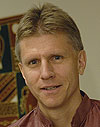
David Hamer
Time is running out! Applications are being accepted through 9 December 2011 for the 2011-2012 ISTM Research Awards. The application and instructions for proposal submission are available on the ISTM website at www.ISTM.org.
The grants range from USD 5,000 to USD 10,000, although a single grant of USD 20,000 may be considered for exceptional proposals. Grant requirements include:
- Research must be travel medicine or immigrant/refugee health oriented.
- Application and protocol proposal must be scientifically sound and must be in accordance with international ethical guidelines.
- There must be no conflicts of interest for any of the investigators who apply for research funding.
- Grant applicants must be ISTM Members in good standing .
Grants are awarded annually through a peer-review process implemented by the ISTM Research and Awards Committee. The awards are designed to stimulate travel medicine research by supporting comprehensive research projects or, for larger projects, providing support for pilot studies to enable researchers to collect data/test hypotheses so that they can then apply to other agencies for more substantive research grants.
Nurses Professional Group
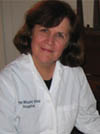
Gail Rosselot
NPG Council Update
The Council of seven continues to meet bimonthly to achieve our mission and goals. Our minutes are now posted regularly on our webpage. We encourage all nurses to read about our activities and to bring to our attention any concerns or issues. The Council represents your interests within ISTM. Please let us hear form you. You can email Chair Gail Rosselot or Co-Chair Lani Ramsey.
CE Task Force
We are happy to report that in response to our second request for volunteers, more than 20 nurses and nurse practitioners have offered their help on this project. Right now we are initiating conversations with all the volunteers and gathering their ideas about this issue. Early in November the task force will send out a survey to all ISTM nurses on this important subject. Please respond when the short survey comes to your email box. NPG Council must send on a recommendation to the the ISTM Executive Board by early January 2012 if we want this topic addressed in time for the Maastricht meeting in 2013.
NPG Liasion to Pharmacist Professional Group (PPG)
Lani Ramsey has volunteered to serve as the NPG liasion to PPG. In this non-voting position, Lani will help NPG to coordinate collaborative efforts between the two groups. Some possible projects include: a joint survey mapping nursing and pharmacy travel health practice around the world, a joint article in JTM on shared interests and challenges, joint research initiatives, and more...If any ISTM nurse has suggestions for further collaborative efforts, please let us hear from you.
Four NPG Candidates to Serve on Maastricht Scientific Committee
In response to our request for nurses to volunteer for the Maastricht Scientific Committee, NPG received 12 names and put forward eight based on criteria suggested by the Scientific Committee chairs. We are happy to report that four of those nurses have received and accepted invitations to serve on the CISTM13 Scientific Committee: John Bosch, the Netherlands, Nahoko Sato, Japan, Hilary Simons, UK, and Carolyn Driver, UK. We congratulate those nurses and look forward to working with them to build a great program in Maastricht.
Proposals for CISTM13
Reminder: Proposals for plenaries and workshops are due by 15 February 2012. Now is a great time to think about your practice and suggest topics for the Maastricht meeting. It is also a good time to collaborate with colleagues and propose topics to present.
Next Issue of NewsShare:
Claire Wong will share plans for the Dublin meeting next spring. We would like to highlight the practice of a nurse in Canada or the Pacific Rim. Please volunteer to help us share your professional story! Have you presented at a national or regional meeting? Won a special nursing award? Please let us know so we can celebrate your successes in the next issue.
ISTM Pharmacist Professional Group (PPG) News

Jeff Goad
Did you know that the number of pharmacist members in the ISTM represents the fastest growing segment of our membership? We were excited to learn that the number of pharmacist members has increased over 70% as of 2011.
The ISTM PPG intends to become a leading international advocacy organisation for members of the pharmacy profession working in the area of travel medicine and to increase awareness of and to promote the roles played by pharmacists in the area of travel medicine in all countries and regions. If you are a pharmacist member of the ISTM and have not yet joined our group, please consider it. The process is simple and there are no costs - financial or otherwise - to join. For those interested, please visit the ISTM membership area.
Congratulations to Dr. Larry Goodyer for being selected to participate on the CISTM13 Planning Committee for Maastricht, The Netherlands and Dr. Karl Hess for appointment to the ISTM Research and Awards Committee. Also, Chair-Elect Claudine Leuthold of the PPG will serve as a liaison to the Nursing Professional Group and Lani Ramsey will serve as their liaison to the PPG. We are confident this new communication between pharmacy and nursing will lead to much future collaboration since both groups are heavily focused on pre-travel health.
Pediatric Interest Group
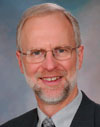
Philip Fischer
There are now more than 275 members of the pediatric interest group, and lots of projects are underway. Everyone interested in pediatric travelers is welcome to join.
SURVEY A third of the members responded to a survey in September and revealed that the group mirrors the geographical distribution of the overall ISTM. Over half of respondents were 40+ years of age, and over half were female. Most group members are physicians, but 10% are nurses, and 8% are nurse practitioners. Only a tenth have a DTM&H, and about a third are certified as knowledgeable in travel health. Only a fourth of respondents work in an exclusive travel medicine setting, and the majority of interest group members spend less than 10% of their professional time doing travel health. Most see fewer than five pediatric travelers each week. Only a small minority see post-travel patients. VFR travelers account for a third of interest group members' travelers. About half of respondents' patients are pre-adolescents. The survey also revealed a fair variability in the way respondents manage infant travelers; this will serve as fuel for ongoing discussions and education. We are a diverse group who mostly mix pre-travel pediatric care with other activities. As a group, we can seek to support ourselves in the challenging task of caring for young travelers, and we can seek to upgrade the care that these children receive.
VISIBILITY Our group is being noticed! We were favorably mentioned in Travel Medicine Advisor (21:60, 2011) and the Journal of Travel Medicine (18:363, 2011).
BIBLIOGRAPHY Do you want direction toward medical literature relevant to pediatric travel? The ISTM website now includes our group's annotated bibliography of useful papers.
PROJECTS Several action groups are forming. One group is working with the American Academy of Pediatrics to develop guidelines and educational material to promote safety during travel - as a starting point for similar international activities. Another group is developing a reference list of websites useful for providers of pre-travel pediatric care. Other group members are focusing on VFR travelers in an effort to extend the reach of good pre-travel care into key populations. As you likely saw on the listserve, others are preparing a reading list to help children and adolescents maximize the value of their travel and to even consider careers in travel and tropical medicine.
ISTM Members Involved in a Large Collaborative EU Grant on Dengue!

Annelies Wilder-Smith
In 2010, the European Commission issued a call for a proposal on dengue with the title "Comprehensive control of dengue under changing climate conditions". This call for a single stage proposal required collaborative efforts with dengue-endemic countries and with small to medium size research enterprises. To respond to this call, Prof. Annelies Wilder-Smith, with the University of Umea, Sweden, as hosting institution, put up a proposal with 14 partners and 12 work packages centered around three research areas.
Here we want to report on research area 3. Research area 3 responds to the specific question by the European Commission to describe the risk of introduction and establishment of dengue in non-endemic countries, in particular in Europe. Annelies brought three work packages together to address this issue. One work package under the leadership of Prof Christoph Hatz from the Swiss Institute of Public Health and Tropical Medicine (active member of ISTM) will look at dengue in returning travellers to Europe. This will be done using the existing TropNetEurop network. We will describe the trends of dengue importation into Europe, produce phylogenetic trees and do Bayesian modelling on imported dengue viruses to Europe and describe virus evolution over time in association with geographic origin. Complementary studies led by Prof Paul Reiter from the Institute Pasteur in Paris will determine the vectorial competence of Aedes albopictus in Southern Europe to determine the vectorial capacity of Aedes in temperate climates. Modellers will then look into predictive models integrating vector capacity, force of infection and extent of dengue importations.
The Tribulations of a Klutzy Traveler
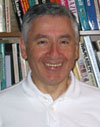
Karl Neumann
Before I tell you how incompetent I am when it comes to one aspect of travel, it is necessary to mention (boast?) that I have been around the world - more than a few times. I have visited about 120 countries, stayed in countless hotels - from ones with neither running water nor electricity to some very plushy establishments, ones that cost an arm and a leg, figuratively and almost literally, as you will see shortly. I have crossed the Atlantic and the Pacific by ship and the Atlantic on the flight deck of the Concorde - takeoff and landing included, Siberia by train, empty stretches of Namibia and Cameroon by four-wheel drive and a bit of the Himalayas on foot. I have slept, or tried to sleep, under mosquito netting in the Amazon rain forest, in gurs in Mongolia, and in an ice hotel above the Arctic Circle. I did this and more to gather information for media articles on staying healthy when traveling.
But I remain clueless with hotel bathroom plumbing! Whether I bathe or shower depends not on my whims of the moment but on the fixtures I can work.
My most frequent run-ins are with bathtubs that have both overhead and handheld showers. Once, in Helsinki, I had one with eight almost identical knobs, none labeled. No ONs or OFFs, HOTs or COLDs, no symbols, no arrows. Probably Modern Finnish minimalist décor? Predictably, when I turned on what I hoped was the overhead shower, the handheld one sprayed out of control, soaking the clothes I planned to wear.
I fared better at a renowned hotel on a golf course in St. Andrew’s, Scotland. To their credit, shower instructions were imprinted on the bathroom wall:
Water Pressure. Turn the upper control anti-clockwise to activate water at the standard pressure. To increase the water pressure, press the end of the override switch on the side of the control and continue turning.
Water Temperature. Turn the lower control to change the water temperature, up to 40 degrees centigrade. To increase the temperature further, press the end of the override switch on the side of the control and continue turning.
A no brainer. Of course, I bathed, and fondly remembered a user-friendly shower in the Peruvian rain forest, one with predictable water temperatures. It was an outdoor stall, with the sky and a water tank visible above. The sun-heated water, controlled by an accessible old clamp, flowed in two temperatures, hot in the afternoon, lukewarm late evenings and early mornings.
Scary showers are ones where you have to place yourself directly under the showerhead to operate the controls - and risk getting scalded. If there is a shower curtain I am pretty adept at protecting myself by using the curtain as a cape to divert the water. Or, approach such intimidating showers by standing under them, aiming the showerhead so the water runs down the wall while I fiddle with the faucets, avoiding most scalding. But this showerhead, as large as a sunflower, was above my reach. And the shower fixture had a dial for setting water temperature that I could not decipher. And there was no bathtub.
My most effortless shower? Barcelona. As I entered the bathroom, water was already running, and at a pleasant temperature - dripping through the ceiling from numerous sites. I grabbed an only partially wet towel, dried myself, and called maintenance. They came, spoke Spanish (I don’t), pointed upwards and left. On returning, by their gestures I believe they said that there was a klutzy guest upstairs who did not understand plumbing.
In Melbourne, I pre-scuffled with the sink before scuffling with the bathtub/shower. I couldn’t shut off the water after washing my hands. The sink had sleek, eye-pleasing cylinders instead of knobs. I blamed jetlag, having just completed a trans-Pacific flight. But after repeated attempts, using different handgrips, the water kept running. Then I noticed a card over the sink. It said:
We Care about the Environment.
Working together we can conserve millions of liters of water, save energy and minimize the release of detergents...
I do care about the environment and abhor wasting water. Was the problem my wet hands, having had no difficulty turning on the water? Were these dry-hands-only faucets? What to do? The "We Care about the Environment” card was handiest. I tried twisting it around the cylinders/ knobs. But the card was laminated and wouldn’t bend. So I tried a washcloth. It worked.
Next, I faced my was-I-destined-to-bathe-or-shower dilemma. The tub was humongous, as bizarre in appearance as was the sink in function. Set in a corner, it was triangular in shape. The two sides extended along the walls for six feet, jutting into the bathroom five feet. It was a steep twenty inches high with two narrow tiled steps, likely to ease climbing in and out, but more likely to cause a broken limb, especially when wet.
What was the designer thinking when conceptualizing this absurdity? Appearance? Nice for goldfish. Environmentally friendly? A water guzzler in a country with chronic water shortages. Function? OK for bathing three small children simultaneously.
I showered, to conserve water and prevent drowning. (I have seen other large tubs. In Las Vegas, I was once assigned a room with a round tub - at the foot of my bed. I changed rooms, fearing falling in if I got up at night.)
My most memorable shower? At a threadbare "resort” in the then Soviet Union, three-hours’ drive from Leningrad. My bathroom lacked shower, bathtub, soap and sink stopper. On a wooden shelf was a worn length of garden hose with a rusty showerhead at one end.
I consulted a guest from Soviet Moldavia I had met that day, my first at that hotel, and asked where the soap was kept and where to shower. He spoke no English; I speak no Russian. He spoke Yiddish, I speak German and understand a few words of Yiddish and Yiddish is similar to German. His first question: why was I traveling without soap, coming from America where soap is readily available? The hotel did not supply soap. He gave me half of his small piece. He then explained, mostly with gestures, to attach the hose to the faucet, position myself over the drain in the floor, and hold the showerhead over myself. My best chance for lukewarm water (no chance of hot) was between two and five A.M. when relatively few persons showered. He suggested that I shower that night/morning because the news about the lukewarm water was spreading rapidly through the "resort.”
Simple, in theory. However, the hose did not fit snugly on the tap, requiring one hand holding the hose to the faucet, the other holding the showerhead, leaving no hand for washing. Worse, the drain was far from the sink. With one hand on the tap, there was no way to stand over the drain. And the linoleum floor did not slope toward the drain, which I had not noticed in the light of the 10-watt bulb. Within seconds of starting my shower a large puddle formed where I stood.
What to do? Wash with the water in the fairly clean puddle or wash at the sink with an improvised stopper? Cleverly, I used my socks as a stopper, and then, to conserve soap, used the soapy water in the sink to wash my socks.
My Grand-est bath? Bangkok. The tub was parallel to a window, which extended the length of the tub and went from tub to ceiling. Sitting in the tub, I could see nondescript housing and a corridor of land about 70 yards wide. The corridor contained four parallel roads with 27 lanes of traffic on two levels and two railroad tracks.
After watching this scene of modern Asia, I looked for the soap, expecting to exit my bath, having, as usual, forgotten to check if it was by the tub. Wrong. It was reachable, placed next to a TV remote control unit, probably left there by an absentminded maid. Wrong again. Near the ceiling, over one end of the tub dangled a TV set, superior to the one near my bed. In fact, I had to bathe to watch CNN.
In this tub I could enjoy water at my preferred temperature, watch TV and look at incredible traffic. With my toes and feet I could turn the water on and off, select temperature, and open and close the drain. This hotel is aptly named: the Miracle Grand.
But Grand miracles rarely happen. For me, survival modes are more common. Therefore, I have recommendations for hotel brass (get the pun?):
- Label bathroom fixtures on some floors, not on others. Let guests choose as they do with smoking.
- Have bellboys demonstrate "dry runs” of taking baths/showers. I’ll figure out where to fetch the ice.
- Show family-rated bath/shower-taking videos.
- Install 24-hour hot lines to hotel bathroom designers. Make them explain the plumbing.
- Un-polish slick marble bathroom floors. Better to risk breaking limbs on ski slopes or exploring Roman ruins.
- Resurrect bath stewards. Until the 1950s, many upscale hotels lacked private bathrooms; each floor had one room that only had a tub. You contacted the steward to "draw” baths to your specifications: lukewarm, hot, or very hot, and with bath oils. Civilized.
- Finally, often I have accidentally "shampooed” my hair with bath oils, recently with cucumber lemon. (No tragedy, but messy and with an odd lingering aroma.) Since I never intentionally wear glasses for baths/showers, I can’t read the labels on those little bottles. Please, hotel brass, enlarge the print.
ISTM Crossword Puzzle
All answers can be found on the ISTM Website.
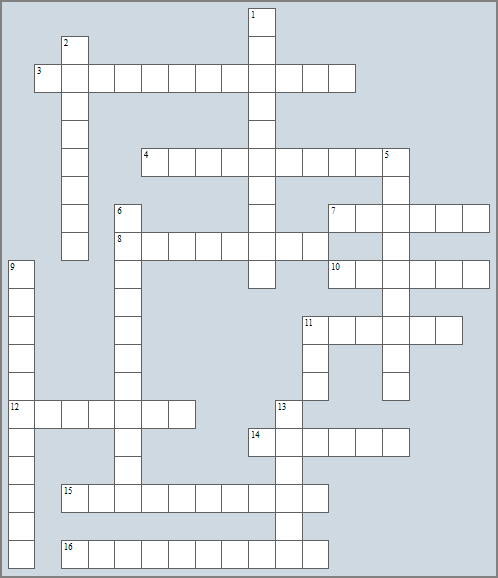
Across
|
Down
|
- - - - - - - - Click here for the key (it will open in a new browser window) - - - - - - - -
